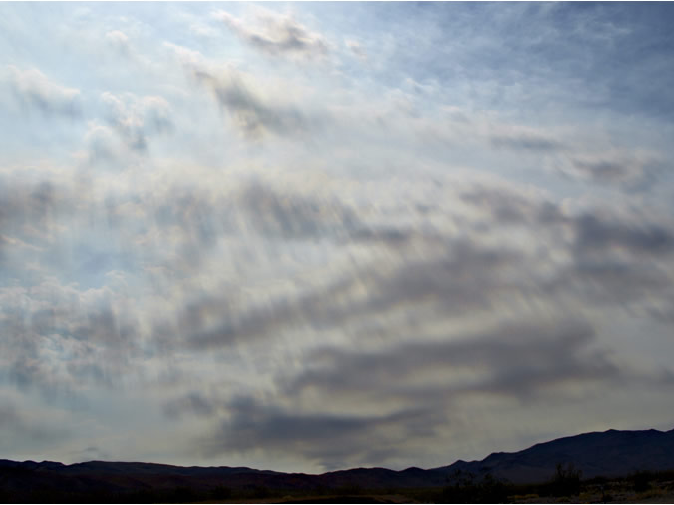Smoke Rays
Smoke Rays: A Phenomenon of Atmospheric Optics
When we think of atmospheric optics, we often picture vibrant rainbows or colorful sunsets. However, there is another fascinating optical phenomenon that occurs when sunlight interacts with smoke particles in the air - smoke rays. These peculiar-looking diffuse rays can be observed when the sun's rays pass through smoke, creating an enchanting display of light and shadow. In this article, we will delve deeper into the phenomenon of smoke rays and explore the science behind their formation.
The Origin of Smoke Rays
Smoke rays are typically observed when there are nearby fires or other sources of smoke. The smoke particles, which are much smaller than the wavelengths of sunlight, scatter light in various directions. This scattering phenomenon, known as Rayleigh scattering, is responsible for the colors we perceive in the smoke rays. Blue light is scattered more strongly than red light, causing the rays to appear blue in color.
The Play of Colors
If you observe smoke rays carefully, you may notice hints of reds and blues within them. This interplay of colors occurs due to the differential scattering of light by the smoke particles. As mentioned earlier, blue light is scattered more strongly, resulting in the blues of the rays being intensified. On the other hand, when sunlight passes through shadowed smoky air and illuminates clouds, the blue light is further scattered away, causing the clouds to appear reddish in color.
Observing Smoke Rays
If you ever have the opportunity to witness a hot outdoor fire with smoke rising from it, try observing it from a side angle relative to the sun. You'll notice that the smoke appears blue. This bluish hue is a result of the scattering of blue light by the smoke particles. However, when you look through the smoke and focus on the background, you'll observe a reddish-brown color. This coloration arises because the blue light has been scattered away, leaving behind the longer-wavelength red and brown hues.
Smoke Rays in Nature
Smoke rays are not only a captivating sight during wildfires or controlled burns; they can also occur in various other natural settings. For example, volcanic eruptions often release large amounts of smoke and ash into the atmosphere, creating a similar scattering effect. Additionally, smoke from industrial activities or even car exhaust can lead to the formation of smoke rays under the right atmospheric conditions.
The Importance of Understanding Smoke Rays
While smoke rays are undoubtedly visually striking, they also serve as a reminder of the complex interactions between light and the atmosphere. By studying the behavior of light in the presence of smoke particles, scientists gain insights into the physics of scattering and the properties of aerosols in the atmosphere. This knowledge is crucial for understanding various atmospheric phenomena, including climate change, air pollution, and even the formation of clouds.
Conclusion
Smoke rays are a captivating manifestation of atmospheric optics. These diffuse rays, created when sunlight passes through smoke particles, exhibit beautiful hues of blue and red. By understanding the underlying science behind smoke rays, we can appreciate the intricate interplay between light and matter in our atmosphere. So, the next time you find yourself witnessing smoke rays, take a moment to marvel at the wonders of nature and the fascinating world of atmospheric optics.

Rays & Shadows through smoke Imaged by Andrew Kirk at Stovepipe Wells in Death Valley, California September 1, '09.
�Andrew Kirk, shown with permission.

These peculiar looking diffuse rays (the camera was in focus!) were cast by the sun through smoke originating from the fires near Los Angeles.
There are hints of reds and blues. Smoke particles are much smaller than the wavelengths of sunlight and scatter blue light much more strongly than red (Rayleigh scattering).
The blues of the rays are strengthened whereas the clouds seen by transmission through shadowed smoky air have their light reddened because the blues are more strongly scattered from the direct beam.
Watch smoke from a hot outdoor fire, side on to the sun it is blue. Look through the smoke and the background looks red-brown.
Note: this article has been automatically converted from the old site and may not appear as intended. You can find the original article here.
Reference Atmospheric Optics
If you use any of the definitions, information, or data presented on Atmospheric Optics, please copy the link or reference below to properly credit us as the reference source. Thank you!
-
<a href="https://atoptics.co.uk/blog/smoke-rays/">Smoke Rays</a>
-
"Smoke Rays". Atmospheric Optics. Accessed on November 26, 2024. https://atoptics.co.uk/blog/smoke-rays/.
-
"Smoke Rays". Atmospheric Optics, https://atoptics.co.uk/blog/smoke-rays/. Accessed 26 November, 2024
-
Smoke Rays. Atmospheric Optics. Retrieved from https://atoptics.co.uk/blog/smoke-rays/.